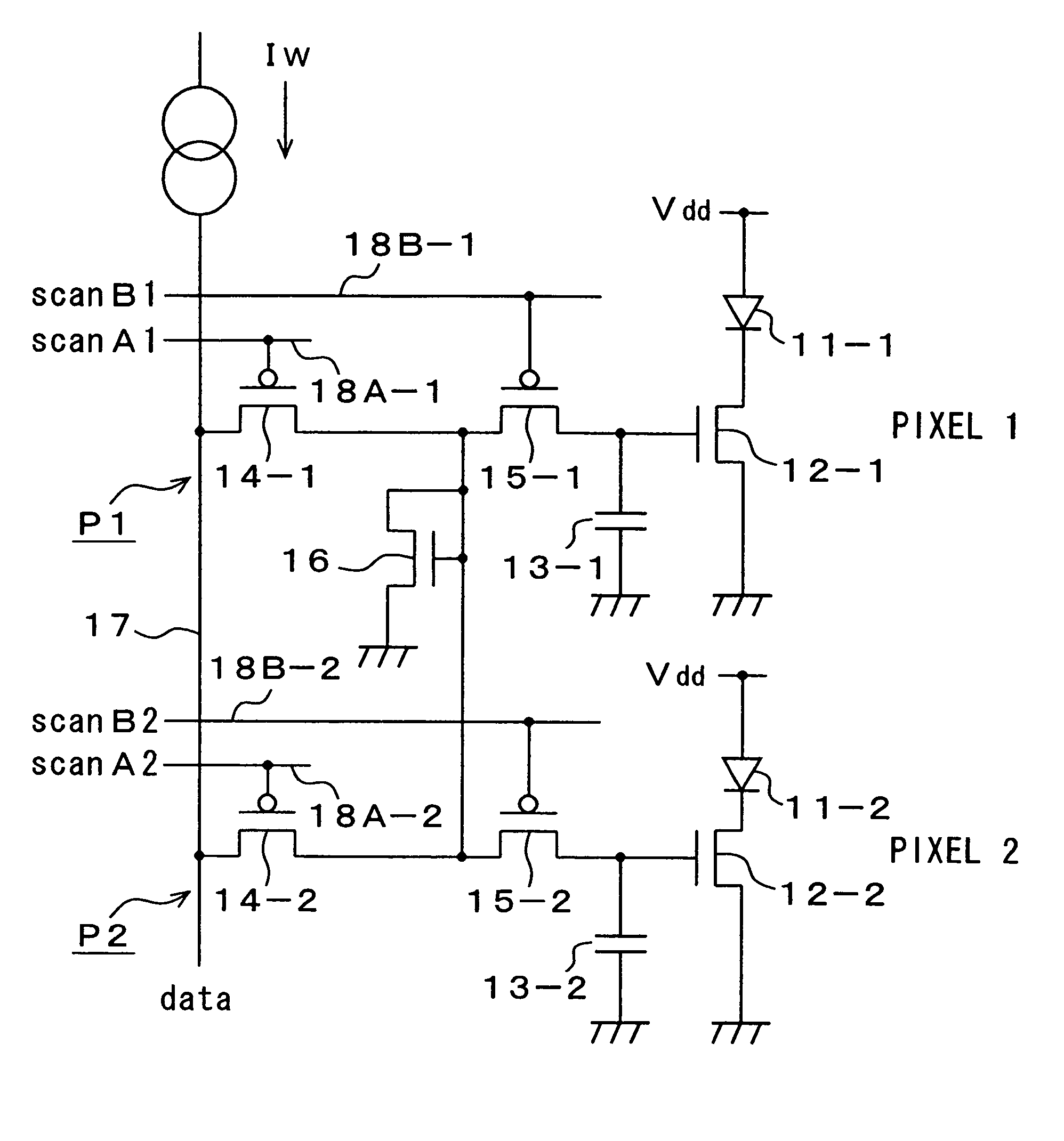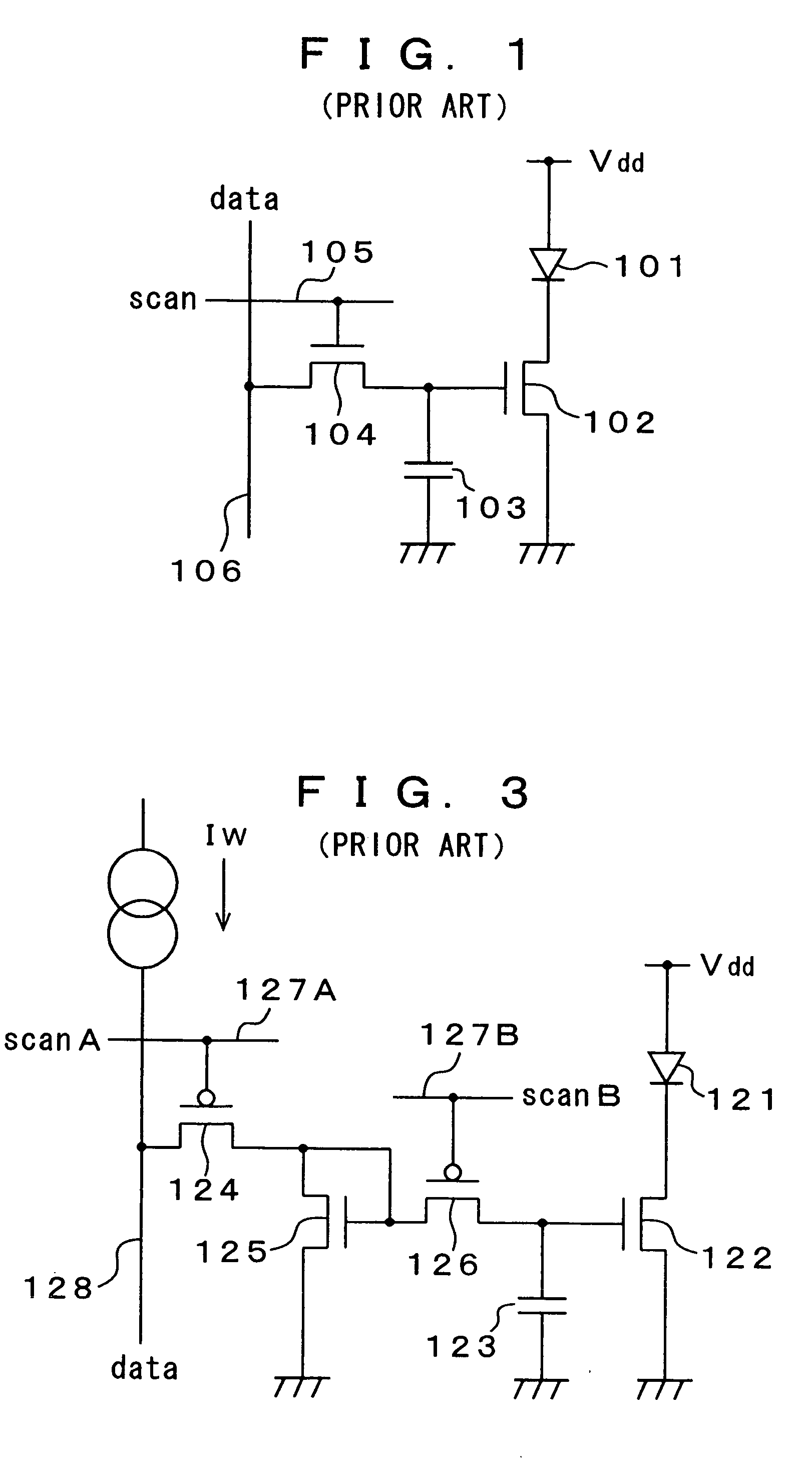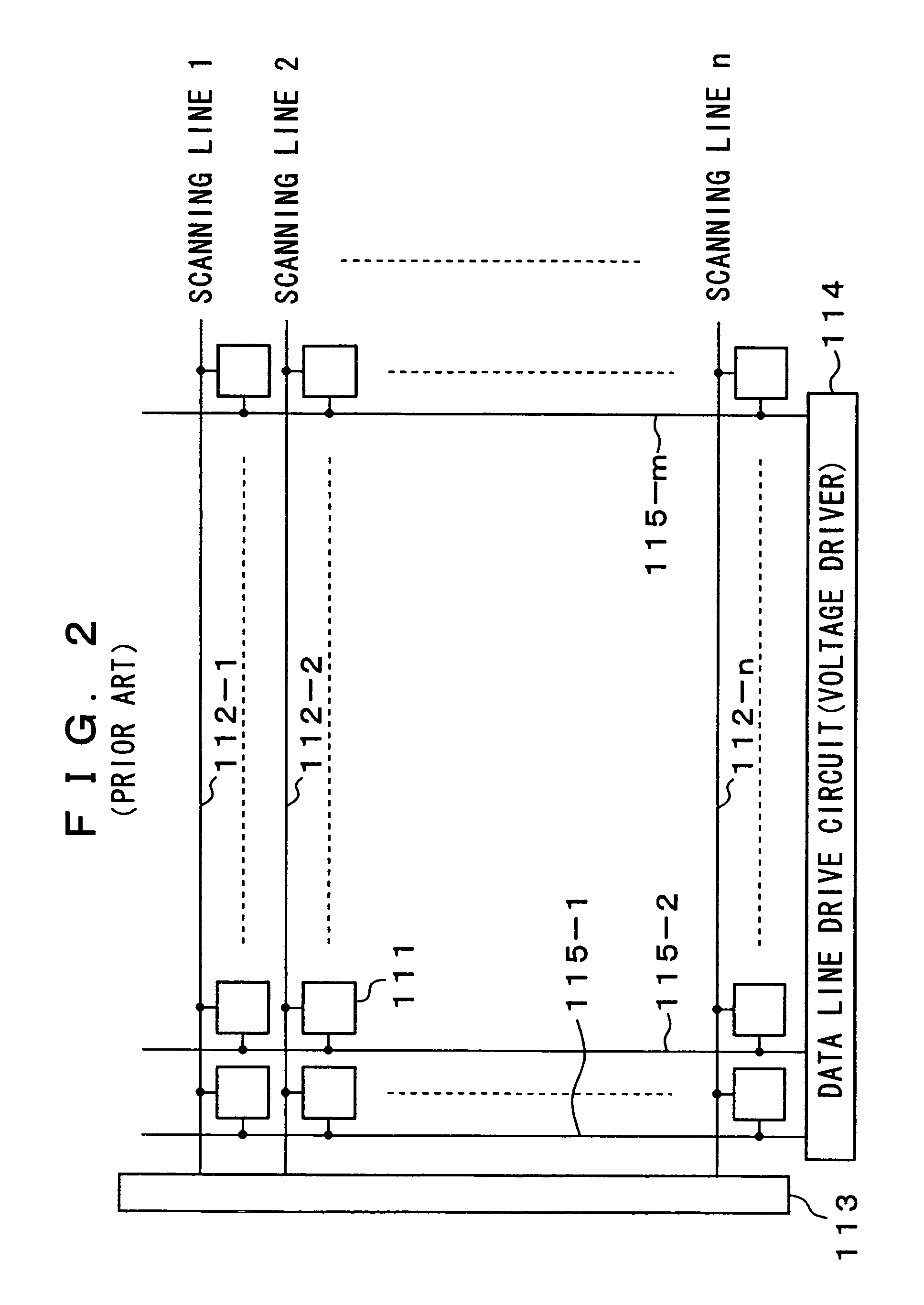Active matrix type display device, active matrix type organic electroluminescent display device, and methods of driving such display devices
a display device and active matrix technology, applied in static indicating devices, identification means, instruments, etc., can solve the problems of poor conductivity and controllability, difficult problems, and poor crystallization properties of amorphous silicon (non-crystalline silicon) and polysilicon (polycrystalline silicon) to be used for forming tfts, etc., to reduce the area of the pixel circuit occupying, the effect of large area
- Summary
- Abstract
- Description
- Claims
- Application Information
AI Technical Summary
Benefits of technology
Problems solved by technology
Method used
Image
Examples
first embodiment
[0075]FIG. 6 illustrates a circuit diagram of a first embodiment of a current-writing type pixel circuit according to the invention, in which only two neighboring pixels (pixel 1 and 2) in a column are shown for simplicity's sake in drawing.
[0076]As shown in FIG. 6, the pixel circuit P1 of pixel 1 comprises OLED (organic EL element) 11-1 having an anode connected to a positive voltage supply Vdd, a TFT 12-1 having a drain connected to a cathode of the OLED 11-1 and a grounded source, a capacitor 13-1 connected to a gate of the TFT12-1 and the ground (reference potential point), a TFT 14-1 having a drain connected to a data line 17 and a gate connected to a first scanning line 18A-1, respectively, a TFT 15-1 having a drain connected to a source of TFT 14-1, a source connected to the gate of the TFT 12-1, and a gate connected to a second scanning line 18B-1, respectively.
[0077]Similarly, the pixel circuit P2 of pixel 2 comprises OLED 11-2 having an anode connected to the positive volt...
second embodiment
[0115]FIG. 13 is a circuit diagram showing a second embodiment of a current-writing type pixel circuit according to the invention. Like reference numerals in FIGS. 13 and 6 represent like or corresponding elements. Here, for simplicity of illustration, only two neighboring pixels (pixels 1 and 2) in a column are shown.
[0116]As compared to the first embodiment in which a current-voltage conversion TFT 16 is shared between two pixels, the pixel circuit of the second embodiment has an the first scanning TFT 14 serving as a first scanning switch is also shared between two pixels. That is, regarding “A” group of scanning lines, one scanning line 18A is provided to every two pixels, and the gate of single scanning TFT 14 is connected to the scanning line 18A, and the source of the scanning TFT 14 is connected to the drain and the gate of the current-voltage conversion TFT 16 and to the drains of the scanning TFTs 15-1 and 15-2 serving as a second scanning switch.
[0117]The scanning line 18...
PUM
 Login to View More
Login to View More Abstract
Description
Claims
Application Information
 Login to View More
Login to View More - R&D
- Intellectual Property
- Life Sciences
- Materials
- Tech Scout
- Unparalleled Data Quality
- Higher Quality Content
- 60% Fewer Hallucinations
Browse by: Latest US Patents, China's latest patents, Technical Efficacy Thesaurus, Application Domain, Technology Topic, Popular Technical Reports.
© 2025 PatSnap. All rights reserved.Legal|Privacy policy|Modern Slavery Act Transparency Statement|Sitemap|About US| Contact US: help@patsnap.com



